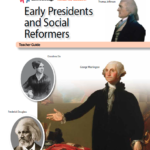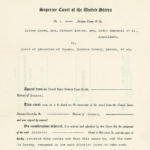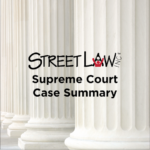On May 17, 1954 the Brown v. Board of Education decision was made. This landmark Supreme Court decision declared that laws establishing separate public schools for black and white children were unconstitutional. The Brown v. Board of Education ruling overturned the Plessy v. Ferguson decision of 1896, which allowed state-sponsored segregation in public schools. To support teachers as they commemorate this important anniversary in their classes, the Share My Lesson team has selected a variety of free lesson plans, educational resources and classroom materials about equity, particularly in schools.
Landmarks of American History and Culture
This Teacher’s Guide provides information and resources for integrating creative approaches to place-based history in K-12 humanities education. As tangible reminders of the past, memorials and monuments, as well as neighborhoods, historic homes, waterways, and many other sites, have the power to influence how we interpret contemporary society. The resources herein address public history and the disciplines that fall within the field; NEH Landmarks of American History and Culture programs and the resources that have been developed for educators; and access to sites included in the National Register of Historic Places and National Historic Landmarks. By introducing historic and cultural sites into the classroom setting, students can develop a greater understanding of the reality and prevalence of history in their local landscape.
Brown v. Board of Education (1954) eLesson
After the Civil War, the 14th Amendment was passed to grant citizenship to former slaves and protect them from civil rights violations in their home states. Public schools were relatively rare throughout the United States, but were often segregated by race where they existed. The same Congress that passed the 14th Amendment created racially segregated schools for the District of Columbia. In the 20th century, the National Association for the Advancement of Colored People (NAACP) began a litigation campaign designed to bring an end to state mandated segregation, calling attention to the shabby accommodations provided for blacks, as well as arguing the damaging psychological effects that segregation had on black school children. One case was brought on behalf of Linda Brown, a third-grader from Topeka, Kan.
The Power of Nonviolence: Rosa Parks: A Quest for Equal Protection Under the Law
This lesson asks students to revisit the well-known story of a figure in the civil rights movement–Rosa Parks–through the primary source documents associated with her arrest in 1955. The arrest occurred in the shadow of the Supreme Court decision in Brown v. Board of Education of Topeka, Kansas (1954) and had a powerful impact on the public policy of segregation and the application of the equal protection clause of the Fourteenth Amendment.
The 14th Amendment and the Evolution of Title IX
Congress and the courts have applied the 14th Amendment’s equal protection clause to many aspects of public life over the past 150 years. In this activity, students will explore the evolution of the 14th Amendment through the lens of Title IX, which prohibits institutions that receive federal funding from excluding students from participating in educational and athletic programs on the basis of sex. The Supreme Court’s first Title IX case, Grove City College v. Bell, also demonstrates how each of the three branches exercises its authority.
American Reformers (CKHG Unit)

This unit (the second part of Early Presidents and Social Reformers) focuses on the efforts to improve American society in the early 1800s. Across 6 lessons, students learn about the temperance movement, free public education, the abolitionists’ crusade to abolish slavery, and the early women’s rights movement. The unit explores early reformers’ legacy in ongoing modern-day struggles for equality and civil rights.
Morse v. Frederick (2007)
Does the First Amendment allow public schools to prohibit students from displaying pro-drug messages during a school-supervised event? This case summary shows how the Supreme Court answered that question in 2007.
Safford v. Redding (2009)
Engel v. Vitale (1962)
Does the recitation of a prayer in public schools violate the Establishment Clause of the First Amendment? A Jewish student sued a New York school board over the daily recitation of a prayer. Middle school level also available.


